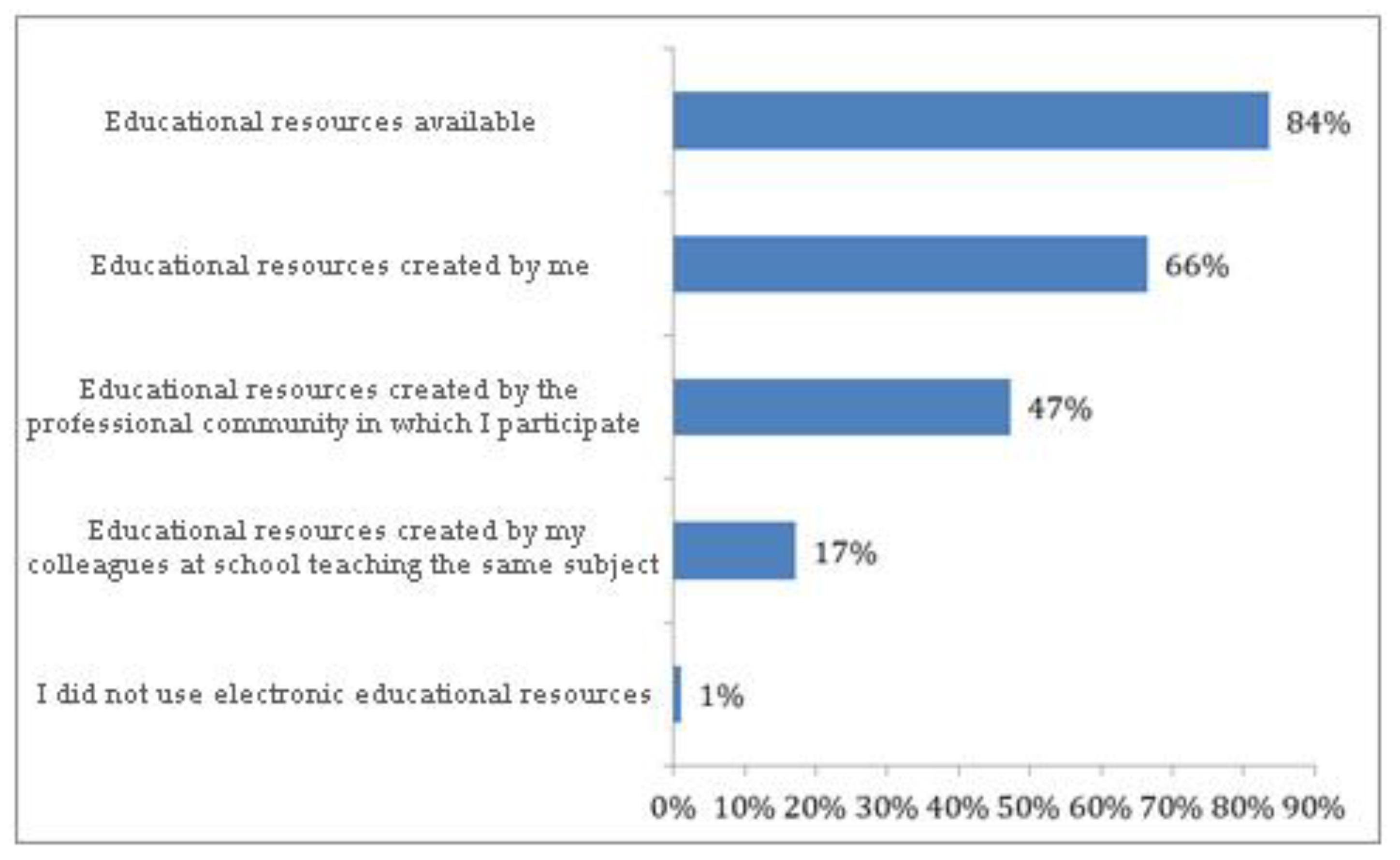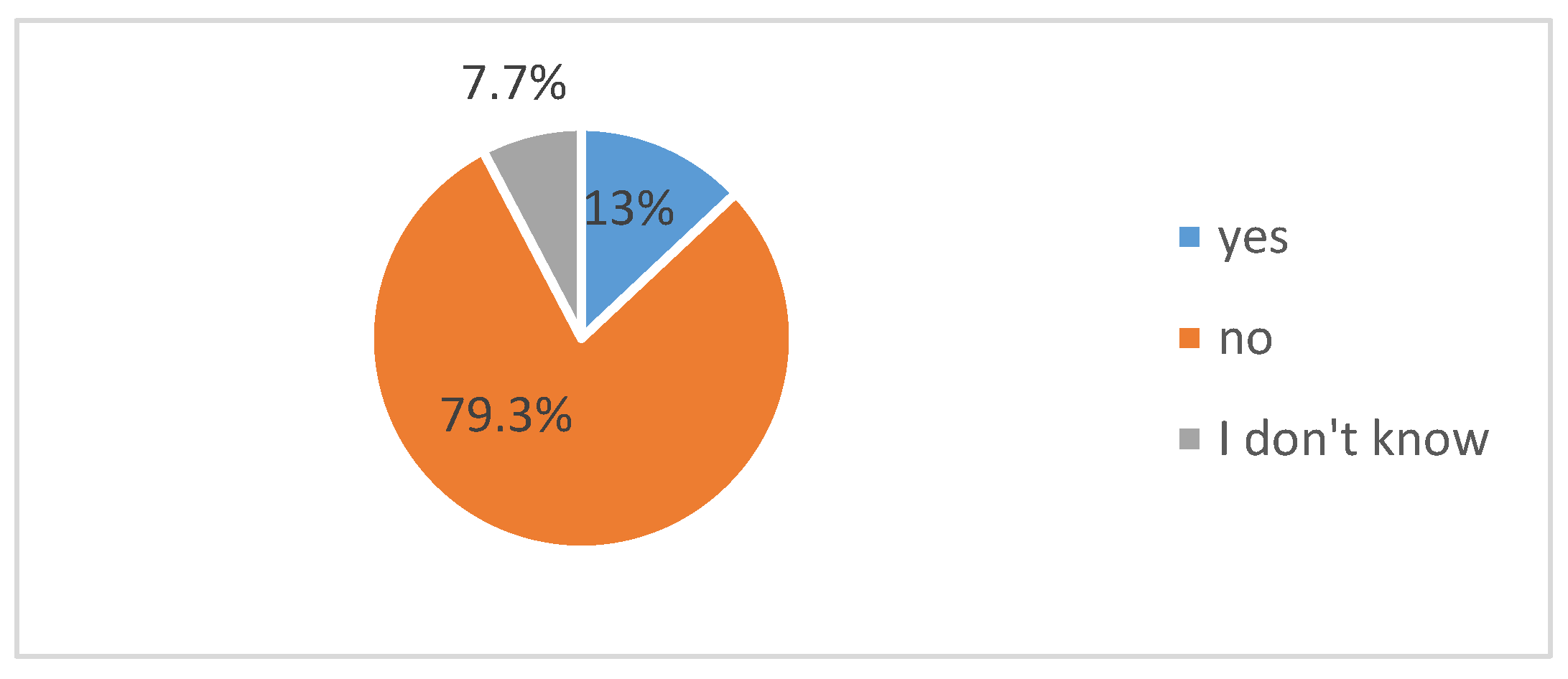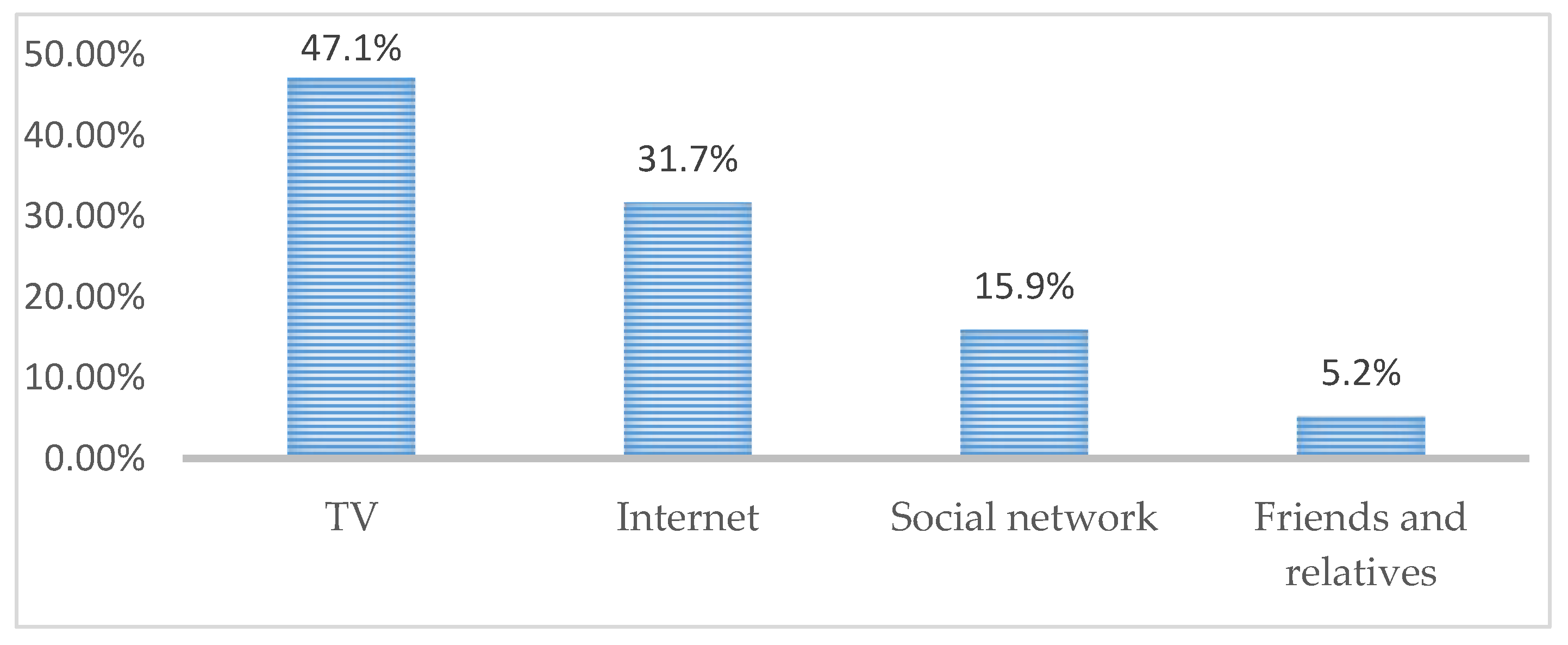Digital Citizenship and Digital Literacy in the Conditions of Social Crisis
Abstract
:1. Introduction
2. Basic Considerations
2.1. Digital Citizenship
2.2. Digital Skills and Digital Literacy
- -
- The Elders Generation, which includes people born before 1925;
- -
- the Generation of Builders born between 1925 and 1946;
- -
- a generation of Baby Boomers born between 1946 and 1964;
- -
- Generation X, born between 1965 and 1979 and adapting to the digital;
- -
- the W generation or children of transition born between 1980 and 1994;
- -
- Generation Z or the Millennium Children born between 1995 and 2009;
- -
- Generation Alpha children born after 2010.
3. Methodology
4. Results
4.1. Focus Groups
“They definitely help because they give access to a very large database of information that can be used for different things”(female, 21 years old).
“Definitely yes, even this is a requirement for almost all better business positions”(female, 21 years old).
“Yes, for example, irregularities are filmed, posted, for example, on social networks or blogs... and this somehow influences people’s social behavior. I feel responsible to take pictures of things that are wrong and to share them with others so that there is a reaction to them”(male, 20 years old.).
“I myself am interested in the environmental topic, and receive information on social networks about various events, we have a group in which such information is shared.”(Female, 19 years old).
- -
- The effectiveness of ongoing digital learning;
- -
- the readiness of the educational system as a capacity and resources for online learning;
- -
- the challenges of online learning.
“The lectures follow the set time as a start and end time, the teachers enter the platforms and present the topics they have provided, then there is time to ask questions from us and ask if something is not clear”(male, 19 years old).
“For me there is no difference in what is taught, the things are the same, whether it will be in the university hall or at home in front of a laptop, there is no difference”(woman, 21 years old).
“Online learning is more effective because teachers give more materials, links to publications than in face-to-face form. Besides, you don’t waste time traveling to the university, everything is electronic and so one mobilizes more”(male, 21).
“not all teachers are equally good and do equally well with the management of the technological system”(male, 20 years old).
“it can definitely be said that young teachers are more adequate and it is easier for them to operate with digital platforms and their rules and their implementation”(female, 21 years old).
4.2. Analysis of Surveys
4.2.1. Digital Education at the Secondary School in the Conditions of COVID
4.2.2. Quantitative National Survey of Digitization in Crises
5. Discussion
6. Conclusions
Author Contributions
Funding
Institutional Review Board Statement
Informed Consent Statement
Data Availability Statement
Acknowledgments
Conflicts of Interest
References
- ETF (European Training Foundation, Turin, 2018) Strategies for Training. Available online: https://www.etf.europa.eu/sites/default/files/2018-10/DSC%20and%20DOL_0.pdf (accessed on 1 October 2020).
- ELINET (European Literacy Policy Network). Available online: http://www.eli-net.eu/about-us/digital-literacy/ (accessed on 1 October 2020).
- Digital Europe Programme for 2021-2027. Available online: https://ec.europa.eu/digital-single-market/en/news/commission-welcomes-agreement-digital-europe-programme-2021-2027 (accessed on 1 October 2020).
- From Traditional Citizenship to Digital Citizenship. Available online: https://epale.ec.europa.eu/bg/blog/ot-tradicionno-grazhdanstvo-km-digitalno-grazhdanstvo (accessed on 1 October 2020).
- De Coster, I.; Sigalas, E. Citizenship Education at School in Europe, 2017. Eurydice Brief. Education, Audiovisual and Culture Executive Agency; European Commission: Brussels, Belgium, 2017. [Google Scholar]
- Ribble, M.; Bailey, G. Digital Citizenship in Schools; ISTE: Washington, DC, USA, 2007; ISBN 978-1-56484-232-9. [Google Scholar]
- Mossberger, K.; Tolbert, C.J.; McNeal, R.S. Excerpts from Digital Citizenship: The Internet, Society, and Participation (Cambridge, Mass.: MIT Press, 2007). First Monday 1969, 13. [Google Scholar] [CrossRef]
- Shelley, M.; Thrane, L.; Shulman, S.; Lang, E.; Beisser, S.; Larson, T.; Mutiti, J. Digital Citizenship. Soc. Sci. Comput. Rev. 2004, 22, 256–269. [Google Scholar] [CrossRef]
- Ribble, M. Digital Citizenship in Schools; International Society for Technology in Education: Washington, DC, USA, 2011. [Google Scholar]
- Ribble, M.; Miller, T.N. Educational leadership in an online world: Connecting students to technology responsibly, safely, and ethically. Online Learn. 2013, 17, 137–145. [Google Scholar] [CrossRef] [Green Version]
- Milenkova, V.; Keranova, D.; Peicheva, D. Digital Skills, New Media and Information Literacy as a Conditions of Digitization. In Applied Human Factors and Ergonomics (AHFEE 2019); Springer: Cham, Switzerland, 2020; pp. 65–72. [Google Scholar]
- Hollandsworth, R.; Dowdy, L.; Donovan, J. Digital citizenship in K-12: It takes a village. TechTrends 2011, 55, 37–47. [Google Scholar] [CrossRef]
- Saura, J.R.; Ribeiro-Soriano, D.; Palacios-Marqués, D. From user-generated data to data-driven innovation: A research agenda to understand user privacy in digital markets. Int. J. Inf. Manag. 2021, 102331. [Google Scholar] [CrossRef]
- Steyaert, J. Inequality and the Digital Divide: Myths and Realities; Hick, S., McNutt, J., Eds.; Advocacy, Activism and the Internet: Chicago, IL, USA, 2002. [Google Scholar]
- Burnett, C.; Davies, J.; Merchant, G.; Rowsell, J. New Literacies around the Globe: Policy and Pedagogy; Routledge: London, UK, 2014. [Google Scholar]
- Gilster, P. DigitalLiteracy; Wiley Computer Publishing: New York, NY, USA, 1997. [Google Scholar]
- Ferrari, A. Digital Competence in Practice: An Analysis of Frameworks; Joint Research Centre: Ispra, Italy, 2012; pp. 25–35. [Google Scholar]
- Van Dijk, J. The Deepening Divide. Inequality in the Information Society; Sage Publications: London, UK, 2005. [Google Scholar]
- Bawden, D. Origins and Concepts of Digital Literacy. In Digital Literacies: Concepts, Policies, and Practices; Peter Lang: New York, NY, USA, 2008. [Google Scholar]
- Van Deursen, A.; Van Dijk, J. Measuring Internet skills. Int. J. Hum. Comput. Interact. 2010, 26, 891–916. [Google Scholar] [CrossRef] [Green Version]
- Jeleva, R.; Nakova, A. Dual Education and Professional Realization. Sociol. Probl. 2019, 51, 805–823. [Google Scholar]
- COM, (2018, 26.4). Tackling Online Disinformation in EU, Brussels: 236 Final. Available online: https://ec.europa.eu/transparency/regdoc/rep/1/2018/BG/COM-2018-236-F1-BG-MAIN-PART-1.PDF (accessed on 15 December 2020).






Publisher’s Note: MDPI stays neutral with regard to jurisdictional claims in published maps and institutional affiliations. |
© 2021 by the authors. Licensee MDPI, Basel, Switzerland. This article is an open access article distributed under the terms and conditions of the Creative Commons Attribution (CC BY) license (http://creativecommons.org/licenses/by/4.0/).
Share and Cite
Milenkova, V.; Lendzhova, V. Digital Citizenship and Digital Literacy in the Conditions of Social Crisis. Computers 2021, 10, 40. https://0-doi-org.brum.beds.ac.uk/10.3390/computers10040040
Milenkova V, Lendzhova V. Digital Citizenship and Digital Literacy in the Conditions of Social Crisis. Computers. 2021; 10(4):40. https://0-doi-org.brum.beds.ac.uk/10.3390/computers10040040
Chicago/Turabian StyleMilenkova, Valentina, and Vladislava Lendzhova. 2021. "Digital Citizenship and Digital Literacy in the Conditions of Social Crisis" Computers 10, no. 4: 40. https://0-doi-org.brum.beds.ac.uk/10.3390/computers10040040





